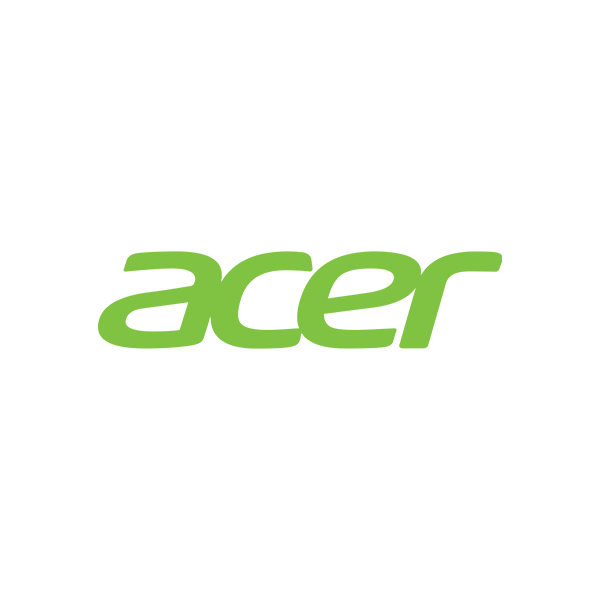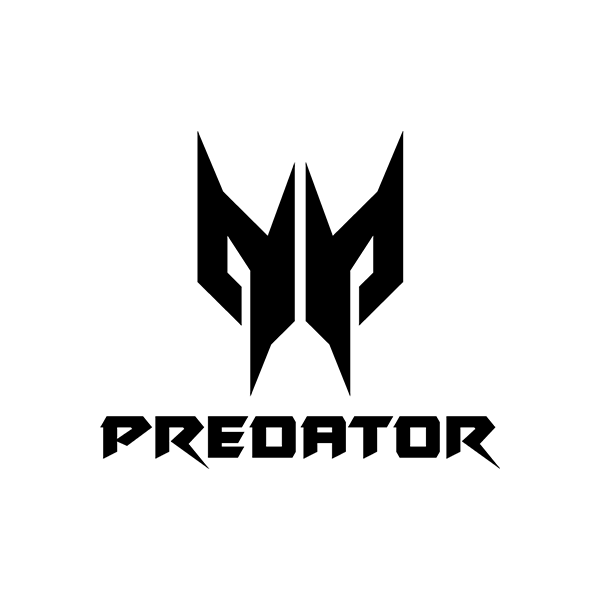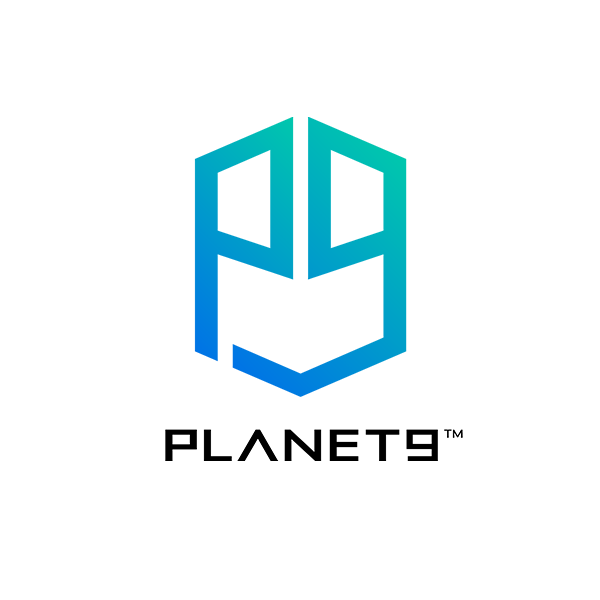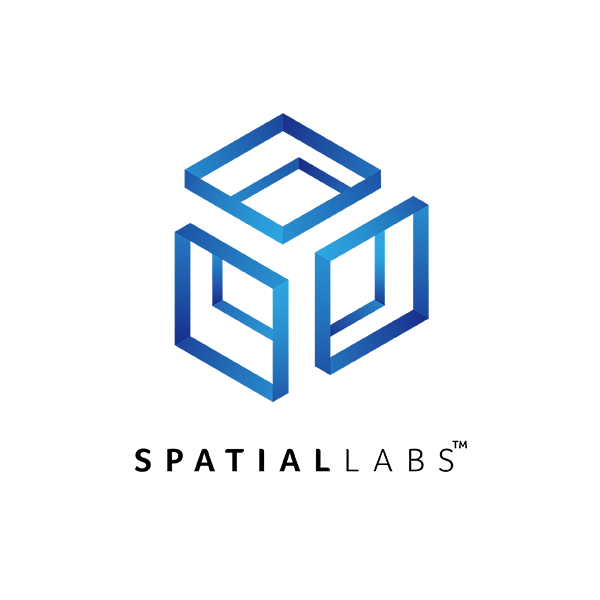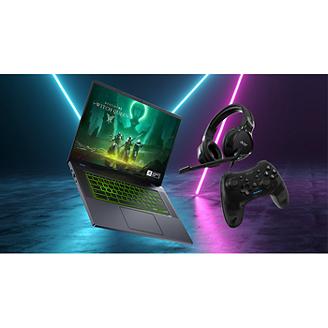-
EA Games is Going Private! Saudi's Buying out EA Games
Electronic Arts will leave public markets in a $55 billion, all-cash buyout. The buyers are Saudi Arabia’s Public Investment Fund, Silver Lake, and Affinity Partners. They will pay $210 per share if the deal closes after approvals. EA will stay in Redwood City, and Andrew Wilson will remain CEO. The deal is one of the largest take-privates in gaming and tech.
Why this buyout is happening
Stable cash from live-service games. EA earns steady money from EA Sports FC, Madden, Apex Legends, and other online titles. These games sell updates, passes, and content over time. That steady flow supports big upfront financing.
Stronger control of valuable IP. The new owners get franchises that work across console, PC, and mobile. They can license, co-produce, and expand these brands into more products and services.
Strategic push from Saudi Arabia. The Public Investment Fund is building a global footprint in games and esports. Owning EA fits that plan and connects to other gaming assets in its network.
Freedom from quarterly pressure. Private ownership reduces the need to hit short-term targets. EA can delay releases, cut weak projects, and back riskier ideas without public market swings.
Financing at scale. The group is combining large equity checks with committed bank debt. That mix lowers execution risk and helps justify the premium price per share.
Who is buying EA and why
Electronic Arts is being taken private by a three-member group: Saudi Arabia’s Public Investment Fund, U.S.-based Silver Lake, and Affinity Partners. The trio is paying cash for control of EA’s catalog and the steady income that comes from long-running sports and online franchises. The structure gives them room to reorganize the business outside the glare of quarterly earnings.
PIF represents Saudi Arabia and is central to the country’s Vision 2030 push to diversify beyond oil. Its strategy in games is scale, talent, and global IP ownership. EA fits that playbook. Owning the publisher puts Saudi capital behind sports and shooter brands that already sell worldwide, and it opens paths to jobs, training, and future studios in markets the fund is targeting.
Silver Lake is a large American private equity firm focused on technology platforms. Its role is to bring operating discipline, digital growth tactics, and add-on deals where they boost margins or expand reach. Expect attention on live-service pipelines, user retention, and mobile extensions where unit economics are strongest.
Affinity Partners adds flexible growth capital and governance support. In a deal this size, a third partner helps balance risk, fund future projects, and keep the board aligned while management restructures timelines and spending.
The combined motive is straightforward: durable cash flows from evergreen games, more monetization across console, PC, and mobile, and the freedom to shift roadmaps without stock-price whiplash. EA’s brands already engage players for years. Private ownership lets the new backers press that advantage while they prune weaker bets and double down on what scales.
How much is the EA sale and when will it be finalized
The group is offering $210 per share in cash, valuing EA at about $55 billion. Funding mixes roughly $36 billion of equity with $20 billion of committed bank debt. EA remains based in Redwood City with Andrew Wilson as CEO. Target close is Q1 FY27, subject to shareholder and regulatory approvals.
With EA trading at $200 on October 10, 2025, the spread to the offer is about 5% in gross terms if it closes at $210. That potential pickup sits more than a year out given the Q1 FY27 timeline.
What popular games/franchises will the new owners get?
Under the new owners, control will center on EA-owned franchises with large, durable audiences and proven live-service or sequel economics; the core titles includes:
* Apex Legends
* Battlefield
* The Sims
* Need for Speed
* Mass Effect
* Dragon Age
* Titanfall
* Plants vs. Zombies
* Command & Conquer
* Dead Space
Several major series rely on third-party licenses and are not EA-owned IP. The buyers will control these only through EA’s publishing and licensing agreements, not through ownership: Madden NFL (NFL/NFLPA), EA Sports FC’s league and club rights, F1 (Formula One), NHL (NHL/NHLPA), UFC, College Football, and Star Wars Jedi (Disney/Lucasfilm). Continuation depends on contract terms, renewals, and licensor approvals.
What this likely means for EA games
Expect tighter roadmaps, fewer bets, and deeper support for live services that already scale. Sports annuals and shooters should get longer content cycles, more cross-play features, and heavier mobile tie-ins. Single-player flagships will ship less often but with clearer budgets and milestones. Older brands may be remastered or mobile-first if unit economics work.
Operational discipline will rise. Studio headcounts and project lists will be rationalized. Metrics such as retention, ARPU, and content throughput will drive greenlights. Hiring and culture will refocus on delivery speed, technical craft, and cost control. External signaling will matter less than output and quality. The short-term path is consolidation; the medium-term path is selective risk on new IP once debt and pipelines stabilize.
Conclusion
This deal takes EA off the quarterly treadmill and gives the teams room to fix pipelines and ship stronger games. I personally believe this will make EA’s releases better over the next few years. If you’re gearing up for them, Acer’s Predator and Nitro laptops and desktops are the safe bet for smooth play; check them out now!
Recommended Products
Acer Nitro 60 (RTX 5070Ti)
Buy Now
Predator Helios 18 AI (RTX 5090)
Buy Now
Acer Nitro V 16 AI (RTX 5060)
Buy Now
-
An Introduction to Acer’s Key Brands
This article introduces Acer’s diverse family of brands, a tech ecosystem that goes far beyond laptops. From grizzled gamers and digital artists to students and professionals on the move, each Acer brand serves a unique purpose and audience.
Welcome to Acer Corner. Whether you came here to learn about Acer or stumbled in while searching for maple trees, you’re in the right place. In the following sections, we’ll explore Acer’s lineup of products and services, from everyday laptops to high-end creative tools and enterprise solutions, and see what makes each branch of the Acer family stand out.
Acer
Before we discuss Predator, AOPEN, and SpatialLabs, let’s cover the fundamentals of Acer, the core brand. Acer’s mission has always been to break barriers between people and technology. Broadly speaking, Acer provides the technology that makes modern life, well, modern. Acer laptops, desktops, monitors, projectors, and accessories balance performance, portability, and price.
Whatever your tech needs are, Acer’s main product line has got you covered. Aspire laptops maximize productivity at home or in the office, while the Swift range prioritizes portability and sleek design. For eco-devices with true green credentials, Acer’s Vero range ticks the sustainability boxes. Acer Chromebooks deliver hassle-free computing for students, cloud workers and anyone who needs out of the box performance. Acer is the foundation upon which all of the other brands are built.
Predator
When Acer decided to stride into the gaming arena, it didn’t just add RGB lighting and call it a day. Oh no, it spawned Predator, a brand forged specifically for all-round winners and esports professionals. Predator gaming machines pack a punch and are unapologetically powerful. These are devices that stand out from the crowd, if you’ve seen a Predator desktop or laptop you won’t soon forget it.
Under the hood, it’s all about speed, control, and responsiveness: Intel Core Ultra processors, NVIDIA GeForce RTX GPUs, advanced cooling systems, and high-refresh displays. From the portable behemoths like Helios and Triton laptop lines to desk-dominating lightning-fast gaming monitors, every Predator product is engineered to prevail. Predator accessories include mechanical keyboards, precision mice, and even gaming chairs to complete the ecosystem. Predator means play without limits, whether you’re earning your crust in an online tournament or just taking over the world on a leisurely afternoon.
Nitro
If Predator is the great white shark then Nitro is the tiger shark: still powerful, but slightly less intimidating and friendlier on your wallet. Nitro was built for gamers who want high-quality, reliable performance without breaking the bank. For a clearer breakdown of the differences between Predator and Nitro, check out this informative article.
The Nitro family includes laptops, desktops, and monitors that make gaming accessible to the masses. If you’re just getting started gaming, or are a hobby gamer, Nitro delivers entry level excellence, with stylish design, solid GPUs, and efficient cooling all tuned for smooth gaming experiences. Nitro laptops like the Nitro V and Nitro 16 balance everyday productivity with serious gaming ability, helping you edit, stream, and play without breaking a sweat (or the bank).
Planet9
There are no physical products in the Planet9 world. Acer’s esports platform is your ticket to stay ahead of the latest developments in gaming. Planet9 is equal parts blog, news hub, training ground, and community space, the connective tissue between Acer’s gaming hardware and the players who use it.
Venture to Planet9, to form and join teams, analyse match data, follow tournaments, and track the latest worldwide esports news. This is a hub designed to help both new and experienced players refine their skills, find teammates, and even connect with coaches. While we all dig Acer’s gaming machines, Planet9 is the social space where the people of the gaming community can flourish.
AOPEN
If you’re still with us, congratulations, for our final brand today is AOPEN, Acer’s displays and monitor specialist. Even if you haven’t heard of the name AOPEN, you’ve likely seen an AOPEN display, as they are the force powering much of the planet’s visual experience.
Originally a standalone company, AOPEN is now an integral part of the Acer empire, creating monitors that serve both commercial and gaming needs. From durable digital signage and business monitors, to high-refresh rate gaming displays, AOPEN represents clarity, reliability, and value. AOPEN also makes industrial PCs and all-in-one computers, so next time you see a gamer’s setup, retail store display, or office workstation, there’s a high chance it's and AOPEN!
One tree, many branches
We hope you enjoyed our journey through the forest of Acer brands today. If you came here in search of maple trees, you likely discovered something new, all growing from the same Acer roots. From the unhinged power of Predator, to the accessibility of Nitro, Acer has gaming covered. SpatialLabs lets you step into fresh 3D realms and AOPEN covers the world's digital display needs, while if you need a little digital guidance, Planet9 can set you on the right course to play, create, work and explore with Acer. Head to the Acer Store and if you’re a student, make the most of the 15% student discount today!
Recommended Products
Acer Swift 14 AI
Buy Now
Predator Helios 18 AI (RTX 5090)
Buy Now
Nitro 60 (RTX 5070Ti)
Buy Now
-
Acer Chromebook Tab 311 – The First Chromebook Tablet from Acer
Chromebook tabs are powered by Google and use ChromeOS for browsing and light tasks, and in this article, we’ll introduce Acer’s first Chromebook tablet, the Acer Chromebook Tab 311, explain how it differs from a regular tablet, and cover its features and specifications. In true Chromebook style, Chromebook tabs encourage cloud-based storage to free up and preserve storage space. Regular tablets usually run Android or iPadOS and rely more on local storage, although cloud options are still available.
Why should you get a Chromebook tab?
Chromebooks are a great choice if you want something that fits nicely between a smartphone and a laptop. They are lightweight and portable, and support productivity by offering fast boot times. Here are some more reasons why you might want to put a Chromebook tablet on your wishlist.
1. Like a mini laptop
Just add a detachable keyboard and voila! You now have a mini laptop-like device. This makes Chromebook tabs suitable for tasks like creating documents and sending emails. Moreover, using a keyboard for such tasks may be more comfortable than a touchscreen and stylus, like with regular tablets. Chromebook tabs are more than just a transportable device that lets you take photos and play games; they are mini laptops that let you work while on the go.
2. Support web-based work
Whether you are a student or company employee, Chromebook tabs support web-based work via Google Workspace. This means that users can create, edit, and amend documents on Google Docs, Sheets, and Slides, and collaborate with classmates or co-workers remotely. Moreover, everything gets saved on the cloud, which frees up local storage space.
3. Long battery life
Chromebook tabs may be small, but they have a long battery life of around 10 hours. They are the perfect travel companion for long-haul flights or commutes, and they help you breeze through days of meetings or classes without needing your power adapter.
Introducing the Acer Chromebook Tab 311
The Acer Chromebook Tab 311 is a sleek tablet designed with connectivity and productivity in mind. It offers 10 hours of battery life to support a full day of work or classes, and has a standard 8 GB memory and flash memory capacity of 128 GB to store apps and photos. The Acer Chromebook Tab 311 includes a handy dockable stylus pen and magnetic keyboard, letting you choose an input method that is most comfortable for you. At just 1.34 lbs (0.60 kg), this Chromebook tab is featherlight but still packs a serious punch in terms of usability.
Specifications
* Operating System: Chrome OS
* Processor Model: Kompanio 520 ARM Cortex-A76/A55
* Processor Speed: 2 GHz
* Processor core: Octa-core (8 Core™)
* Standard Memory: 8 GB
* Flash Memory Capacity: 128 GB
* Display Screen Technology: CineCrystal; In-plane Switching (IPS) Technology
* Screen mode: WUXGA
* Touchscreen: Yes
* Screen Resolution: 1920 x 1200
* Speakers: 2
* Webcam Resolution: 2600 x 1952
* Keyboard: Magnetic (included)
* Stylus: Dockable USI Active Stylus Pen
* Battery Life: 10 hours
* Height: 0.4 inches (1.01 cm)
* Width: 10.5 inches (26.67 cm)
* Depth: 6.8 inches (17.27 cm)
* Weight: 1.34 lb (0.60 kg)
So, should you buy a Chromebook tab?
Chromebook tabs are an outstanding middle ground between a smartphone and a laptop. They are portable and can function just like a laptop with a detachable keyboard, offering 10 hours of battery life for long work or school days. Like standard Chromebooks and Chromebook Plus devices, Chromebook tabs are fully compatible with Google Workspace, allowing you to create, edit, and collaborate on Google Docs, Sheets, and Slides. At USD $349.99, or USD $264.85 with a 15% student discount, the Acer Chromebook Tab 311 is a budget and travel-friendly alternative to a laptop and includes everything you need to embrace your productivity. Check it out on the Acer store and buy yours today.
Recommended Products
Acer Chromebook Tab 311
Buy Now
Acer Iconia X12 Tablet
Buy Now
Acer Iconia V11 Tablet
Buy Now
-
Microsoft Introduces Free Xbox Cloud Gaming
Microsoft has overhauled Xbox Game Pass, split it into different tiers, and raised prices. In the U.S., Ultimate jumped 50% to $29.99/month; Premium is $14.99; Essential stays $9.99. These changes began October 1, 2025 for new members and are rolling to most existing members in early November.
To ease the hit, Microsoft packed in more value at the top tier: 75+ day-one releases/year, Ubisoft+ Classics and Fortnite Crew perks, and higher-quality cloud streaming (up to 1440p) for Ultimate. All tiers now include cloud gaming, with Premium/Essential capped at 1080p.
Not everyone is paying more yet. In countries like Germany, Ireland, South Korea, Poland, and India, existing Ultimate subscribers on auto-renew will keep their current price for now and get 60 days’ notice before any change. This pause does not apply in the U.S. or U.K.
Microsoft is also testing a free, ad-supported version of Xbox Cloud Gaming with short pre-roll ads, one-hour session limits, and a monthly cap (internal test now; public beta planned). It would let players stream select owned titles, Free Play Days picks, and Xbox Retro Classics without a subscription.
Player reaction is mixed: some are canceling over the higher annual cost, while others say Ultimate still saves money if you play many day-one releases.
What changed in Game Pass and is it worth it?
Microsoft renamed its plans to Essential (was Core), Premium (was Standard), and Ultimate and expanded the libraries, cloud features, and perks to help justify the higher price.
* Essential — $9.99/mo.
50+ curated games on console and PC, online multiplayer, in-game perks, and unlimited cloud gaming at 1080p. No day-one Xbox-published titles.
* Premium — $14.99/mo.
~200+ games across console, PC, and cloud, plus Xbox-published games within a year (Call of Duty excluded). Cloud gaming at 1080p. Added Rewards earn-backs.
* Ultimate — $29.99/mo. (up 50%)
75+ day-one releases/year, Ubisoft+ Classics, EA Play, Fortnite Crew (from Nov 18), bigger Rewards, and the best cloud experience: up to 1440p streaming with faster queues. Library spans console, PC, and cloud.
The new pricing began on October 1, 2025 for new members and starts hitting most existing members in early November. Microsoft says the increase reflects a bigger catalog, new partner benefits, and upgrades to cloud streaming.
What does that look like in practice? Ultimate is the showcase tier. It folds in 75+ day-one releases each year, Ubisoft+ Classics, EA Play, and Fortnite Crew starting November 18, plus a beefed-up Rewards program and cloud streaming up to 1440p with faster queues. Premium aims for flexibility at $14.99, with 200+ games across console, PC, and cloud, and Xbox-published titles arriving within a year of launch (Call of Duty excluded). Essential holds the entry point at $9.99, offering 50+ curated games on console and PC, online multiplayer, in-game benefits, and unlimited 1080p cloud play.
There’s also a regional differences. In Germany, Ireland, South Korea, Poland, and India, many existing Ultimate subscribers on auto-renew are keeping their current price for now. Microsoft says those customers will get at least 60 days’ notice before any change; this pause does not apply in the U.S. or U.K. In some countries, like Brazil, the price hike increased by 99%.
Value comes down to habits. If you chase day-one releases or already pay for Fortnite Crew, Ultimate can still pencil out. If you don’t need day-one access, Premium covers a lot for less. If you only dip into a few hits and play online, Essential gets you in the door with cloud included.
A free cloud carrot after an unpopular price hike
The price jump has not gone down well. Many players say $29.99 per month for Ultimate is a step too far, and some have canceled or stacked older deals to avoid paying more. Was the new free, ad-supported Xbox Cloud Gaming meant to calm things down? Maybe, maybe not. It is happening, so here is what it looks like.
How the free tier works (in testing): Microsoft is piloting an ad-supported option that lets you stream select games without a Game Pass subscription. Internal tests use about two minutes of preroll ads, one-hour session caps, and up to five free hours per month. It is planned for PC, Xbox consoles, handhelds, and the web, with a public beta before full launch. Eligible content should include some games you own, Free Play Days picks, and a slice of Xbox Retro Classics. These specifics could shift at launch, but that is the current shape.
Quality and tiers: Cloud officially left beta; Ultimate streams up to 1440p with higher bitrates and shorter queues, while Premium and Essential include unlimited 1080p cloud. The free tier is a sampler, so expect stricter limits and ads rather than premium quality.
Why it matters: A no-cost, try-before-you-pay funnel could bring lapsed and curious players back in, especially on low-spec PCs or mobile. For heavy users who care about day-one releases, Fortnite Crew, Ubisoft+ Classics, and higher-resolution streaming, the value decision still lives at Ultimate, now at a higher price.
Will the higher price stick or will players switch?
The short answer is that Microsoft will try to hold the line, while testing ways to keep people engaged. The price increase is already live for new members and will hit most existing members in early November. Some regions have a temporary pause for existing Ultimate subscribers on auto renew, which shows Microsoft can stagger changes when local rules require it.
Early sentiment points to churn risk. Reader polls and comments show many players canceling or downgrading after the jump to 29.99 dollars per month, although a vocal group still finds value when they play multiple day one titles and use the new perks.
Microsoft’s counter is a wider funnel. The free ad supported cloud tier creates a no cost path to sample games. If the beta draws casual players and lapsed subscribers back into the ecosystem, some will likely convert to Premium or Ultimate over time. Cloud quality also improved, with Ultimate streaming up to 1440p. That helps justify the top tier for people who care about convenience and fidelity.
What to watch next
* If cancellations outpace new sign ups, expect more partner perks, limited time discounts, or regional offers to shore up value.
* If the free cloud test gains traction, Microsoft may raise time caps, rotate stronger catalogs, or run sponsored play events to convert free users.
If you play several day one titles each year and want bundled perks, Ultimate can still make sense. If not, Premium covers a lot for less. If you only dabble, the free cloud tier may be enough once it opens to the public.
Acer purchase bonus: 3 months of PC Game Pass
If you buy a new eligible Acer or Predator Windows 11 PC, you can claim three months of PC Game Pass with EA Play included. This is not Xbox Game Pass Ultimate. It is PC Game Pass, which means you will see much of the Game Pass catalog on Windows, but not every console title. Microsoft’s catalog varies by plan, platform, and region, so some Xbox-only games will not appear in the PC library.
Eligible models (examples)
* Predator Helios Neo 16
* Predator Helios 16 / Helios 18
* Predator Triton Neo 16
* Predator Orion X
* Acer Nitro V 16
* Acer Nitro 14 AMD
What you save
PC Game Pass now costs $16.49 per month in the U.S. Three months included with your Acer purchase is worth $49.47 before tax.
How to redeem
On your new PC, open the Xbox app, sign in with your Microsoft account, and follow the on-screen steps to activate the offer. After three months, the plan renews at the then-current rate unless you cancel. Game availability and EA Play benefits change over time and by region.
Final thoughts: is it still worth it?
The new Game Pass prices are high, especially for Ultimate. But Microsoft has added real value with more day-one games, better cloud performance, and new perks like Ubisoft+ Classics and Fortnite Crew. If you play regularly and want the full experience, Ultimate can still be a solid deal.
For most people, Premium offers the best balance. It includes a wide game library, cloud access, and a lower monthly cost. If you only play occasionally, the Essential plan or upcoming free cloud tier might be enough.
You can also try it risk-free. Buy a new Acer or Predator PC and get three months of PC Game Pass at no cost and if you have a valid student email you can enjoy up to 15% off your next purchase from the Acer Store by signing up with Student Beans. With both options you can save more than 50 dollars and explore hundreds of PC games before deciding if a full subscription is right for you.
Recommended Products
Predator Helios Neo 16 AI (RTX 5070Ti)
Buy Now
Acer Nitro V 16 (RTX 5050)
Buy Now
Predator Helios 18 AI (RTX 5090)
Buy Now
-
Acer Gaming Laptops and Desktops With the 50 Series GPU
It’s no secret that the latest and greatest Acer gaming laptops and desktops are equipped with Nvidia 50 series graphics cards. Built on state-of-the-art Blackwell architecture, 50 Series GPUs go beyond simply rendering pixels, they predict them. Transforming how your favorite games play, next-gen DLSS 4, ultra-fast GDDR7 memory and fourth-gen ray tracing cores leave the competition standing.
Today we’re going to give you the lowdown on these era-defining AI-driven GPUs and the Acer gaming PCs that everyone is raving about. Read on to discover which Nvidia 50 series GPU works for you, as well as the pros and cons of laptop and desktop GPUs.
Introducing the 50 Series GPUs
Nvidia’s GeForce RTX 50 Series is the latest generation of graphics cards, delivering a great leap forward in AI-infused gaming and content creation. Delivering higher frame rates and unbelievably sharp visuals, the 50 Series brings top-notch performance to every level from highly-efficient 1080p systems, to 4K, 8K, and beyond. Let’s take a look at the GPUs in the 50 Series family.
* RTX 5090. King of the 50-Series, the 5090 features 32 GB of GDDR7 memory and a huge core count to power 4K/120 Hz gaming and heavy creative workloads.
* RTX 5080. Built for gamers and creators who demand 4K performance, the ultra-fast GDDR7 memory lets you smash the most demanding games and creative applications at high settings.
* RTX 5070 Ti. Delivering high performance 4K capability for mainstream gamers, DLSS 4 and upgraded cores, deliver strong performance especially in 1440p/4K gaming and 3D/creative tasks.
* RTX 5070. The solid all-rounder for gamers and students in creative fields, the 5070 offers excellent performance per watt and supports the full suite of RTX 50 Series features, ideal for high-end 1440p gamers.
* RTX 5060 Ti / RTX 5060 / RTX 5050 (entry level). These models bring the 50 Series architecture, DLSS 4, and AI horsepower to more accessible laptops and desktops, making modern features available even for 1080p/1440p systems.
Laptop vs Desktop GPU pros and cons
If you’re on the fence about choosing an Acer gaming laptop, or possibly an Acer gaming desktop, then it makes good sense to understand the upsides and downsides of laptop and desktop GPUs.
Laptop GPUs pros:
* Portability: Picture the power of Nvidia’s latest GPUs in a machine you can carry anywhere: laptop GPUs are ideal for students, creators, and gamers on the go.
* Efficiency: Specifically designed for lower power draw and better thermal management, laptop GPUs are optimized for long, cool sessions.
Laptop GPUs cons:
* Performance limits: Slightly lower clock speeds and thermal headroom than desktop versions, reducing absolute peak performance.
* Upgradability: Laptop GPUs are usually soldered to the motherboard, making future upgrades impossible for most users.
Desktop GPUs pros:
* Max power: Larger cooling systems and higher wattage allow desktop GPUs to run at full potential, ideal for 4K gaming and heavy creative workloads.
* Upgradability: Simply swap in a new GPU when the next generation arrives. This can be used to extend your desktops lifespan, as other components can also be easily upgraded.
Desktop GPUs cons:
* Space and power needs: desktop GPUs require a bigger case, stronger PSU, and more airflow for efficient cooling, they are certainly not portable.
* Setup cost: Building or upgrading a desktop can mean higher overall cost as tower, monitor, and other peripherals soon add up.
Acer gaming laptops and desktops with the 50 series GPU
1. Nitro V 16 AI Gaming Laptop
This AI-enabled gaming laptop packs some serious firepower into its sleek 16” chassis. The AMD Ryzen 7 350 processor and Nvidia GeForce RTX 5060 GPU with 8 GB of VRAM, combine to make the Nitro V 16 AI Gaming Laptop - ANV16-61-R8UE a $1,299.99 game and creative task crusher. The RTX 5060’s advanced ray tracing and AI-driven rendering deliver smooth, realistic lighting and higher frame rates, while the 180 Hz WUXGA display keeps every motion sharper than sharp. Cooling? Not a problem, as dual fans and quad-intake cooling keep the system cool at all times, making the Nitro V 16 AI the perfect balance of raw performance, intelligent design, and all-day reliability.
2. Predator Helios Neo 16 AI
Moving on to this Intel Core Ultra 7 255HX processor powered gaming and creativity beast, the Predator Helios Neo 16 AI (PHN16-73-7166) is currently $1,799.99 and features the Nvidia GeForce RTX 5070 GPU with 8 GB of GDDR7 memory. For fluid visuals and responsive gameplay galore, the 16″ WQXGA (2560×1600) IPS display runs at 240 Hz, while the he RTX 5070 GPU enables ray tracing and supports AI-enhanced rendering features, pushing higher frame rates and visual fidelity in games.
3. Predator Helios Neo 18 AI
Next in our GPU-heavy journey, meet the Predator Helios Neo 18 AI Gaming Laptop - PHN18-72-98WF. Made for gamers who require a bit more screen real estate, the Neo 18 AI is powered by an Intel Core Ultra 9 275HX processor paired with an Nvidia GeForce RTX 5070 Ti GPU featuring a whopping 12 GB of GDDR7 memory. Priced at $2,299.99, its 18” WQXGA (2560×1600) IPS panel runs at a rapid-fire 240 Hz refresh rate, guaranteeing ultra-smooth visuals. The RTX 5070 Ti GPU delivers full ray tracing, AI-enhanced rendering, and strong frame rates across the most demanding titles.
4. Nitro 60 Gaming Desktop
The first and last desktop in today’s discussion, the Nitro 60 Gaming Desktop N60-640-UR25 is a $2,449.99 beauty that’s bound to dominate any table or desk it sits upon! Combining the Intel Core i7-14700F (20 cores, up to 5.4 GHz) and an Nvidia GeForce RTX 5070 Ti graphics card, the Nitro 60 is ready for anything you can throw at it. Stacked with 32 GB DDR5 memory and a 2 TB PCIe 4.0 NVMe SSD, this desktop delivers both speed and capacity.
5. Predator Helios 18 AI Gaming Laptop
For our final stop on this week’s GPU guided tour, meet the Predator Helios 18 AI Gaming Laptop - PH18-73-99A8. For on-the-go gamers who demand only the finest, this $6,999.99 laptop is their only option. An Intel Core Ultra 9 275HX processor (24-core) paired with an NVIDIA GeForce RTX 5090 GPU featuring 24 GB of dedicated memory ensures all targets will be smashed. Built for those at the vanguard of laptop computing, the 18″ WQUXGA (3840 × 2400) IPS display runs at 120 Hz, delivering high-resolution visuals in a massive form factor. With 192 GB DDR5 memory and 6 TB of SSD storage, the Helios 18 AI is built for extreme workloads and gaming at demanding specs.
Final considerations
We hope that you’ve enjoyed learning about Nvidia’s 50 Series GPUs today. As you can see from the rundown of the 50 Series and the pros and cons of desktop and laptop GPUs, there’s certainly an Nvidia Series 50 GPU to suit your needs. And by extension, there’s an Acer gaming laptop or desktop that can take your gaming or content creation to previously uncharted realms. If you’re curious about the other Acer 50 series GPU laptops, head to the Acer Store to find out more. Prefer a 50 series GPU powered desktop? No problem, there’s plenty of these waiting to be discovered, too! From the accessible Nitro V 16 AI to the desk-dominating Nitro 60, there’s sure to be an Nvidia-infused Acer PC that’s just perfect for you.
Recommended Products
Nitro V 16 AI (RTX 5060)
Buy Now
Nitro 60 (RTX 5070Ti)
Buy Now
Helios 18 AI (RTX 5090)
Buy Now
-
What Is Sideloading and Why Google Wants to Restrict It
For years, one of Android’s biggest selling points has been freedom it offers over its competitors. Unlike Apple’s iOS, which keeps users locked inside the App Store, Android allows people to “sideload” apps—installing them from outside Google Play. That flexibility helped Android build a reputation as the more open mobile ecosystem. But now, Google is moving to tighten the rules, requiring developers to verify their identity before their apps can be sideloaded. The company says this will improve security, but critics argue it could signal the slow erosion of Android’s openness.
Before looking at why Google is changing course, it’s worth asking a simple question: what exactly is sideloading?
What is sideloading?
Sideloading is the practice of installing apps or transferring files onto a device without going through its official app store. On Android, this usually means downloading an APK file (the package format for Android apps) from a website or alternative store and manually installing it. On iOS, the equivalent is installing an IPA file, typically through developer tools like Xcode or third-party workarounds.
Originally, sideloading simply referred to moving music, videos, or e-books from a computer onto a phone via USB, Bluetooth, Wi-Fi, or memory card. Over time, it became most closely associated with apps as a way to get software that was not available on Google Play or the Apple App Store.
For Android users, sideloading required a small but intentional step: enabling the “install from unknown sources” option in system settings. This gave people more control, but it also meant taking on responsibility since malicious apps are more common outside official channels.
Why people sideload
* Access to apps not available in their country
* Trying beta versions or indie apps not listed on Google Play
* Using modified apps such as ad-free YouTube clients
* Preserving apps that have been removed from stores
The risks
Sideloading opens the door to malware, spyware, or poorly coded apps that can compromise device security. Carriers and manufacturers have sometimes limited it for this reason. Still, for many Android fans the ability to sideload has been a defining feature that separates it from Apple’s tightly controlled ecosystem.
Why Google wants to restrict sideloading
Google argues that sideloading has always been a double-edged sword. It gives users freedom, but it also creates opportunities for bad actors to spread malware. Security researchers have long noted that apps downloaded from outside the Play Store are far more likely to contain harmful code.
To address this, Google announced that starting in 2027 developers will be required to verify their identity even if they never publish on the Play Store. The company says this is similar to an ID check at an airport. It confirms who the developer is but does not screen the contents of their app. In practice, this means that APK files from unverified developers will no longer install on certified Android devices.
The rollout will begin gradually. Early access to the verification system opens in October 2025, it expands to all developers in March 2026, and the first countries where it will be enforced are Brazil, Indonesia, Singapore, and Thailand in September 2026. The global requirement follows in 2027.
For Google, this change is about making Android safer without fully closing the platform. The company insists it will not review the code or decide what content developers can distribute. Critics, however, worry that this is the first step toward a more controlled ecosystem.
How this affects users and developers
For most people who only download apps from the Google Play Store, nothing will change. The new rules only apply to apps that are sideloaded or installed from third-party sources.
For everyday users:
* If you stick to the Play Store, your experience will remain the same.
* If you occasionally sideload apps, you will need to make sure those apps come from a developer who has gone through Google’s identity verification process. Unverified apps will simply not install on certified Android devices once the rules are enforced.
For developers:
* Independent developers who distribute apps through websites, GitHub, or alternative stores will have to register with Google and verify their identity. This involves confirming personal or business details, similar to how publishing on Play Store already works.
* Developers who fail to complete verification will see their apps blocked from installation, even outside the Play Store.
* The process does not involve content review, so developers will still have freedom over what kind of app they build and distribute.
In practice, this creates a middle ground. Google is not banning sideloading outright, but it is raising the barrier to entry by requiring every developer to be traceable.
The debate: security vs freedom
Google frames the new rules as a security upgrade. The company argues that sideloading has been a major source of malware on Android devices, and requiring developer identity checks will make it harder for malicious actors to operate anonymously. In theory, this could reduce the number of harmful apps circulating outside the Play Store.
But for many Android fans, the move feels like a step toward locking down the platform. Sideloading has always represented freedom of choice, whether that means installing region-restricted apps, experimenting with indie projects, or using tools that Google itself might not approve of. Critics worry that an identity verification system could eventually evolve into a gatekeeping tool, with Google quietly blocking certain categories of apps. The most common fear is that ad-blocking software for YouTube will become impossible to install, since Google has a strong financial incentive to limit access to those tools.
The concern is not just theoretical. Apple already uses a similar system in the European Union, where developers must be verified to distribute apps outside the App Store. Even with that framework, Apple has still blocked apps it found undesirable, including a popular **** client. Skeptics argue that Google may eventually follow the same path, beginning with ad blockers and expanding to other categories of apps that threaten its ecosystem.
At its heart, the debate comes down to trust. Supporters of the policy see it as a sensible way to improve safety without eliminating sideloading entirely. Opponents see it as the beginning of a slow shift toward the kind of walled garden that Android was originally meant to avoid.
Conclusion: the future of sideloading on Android
Sideloading has always been one of the defining features of Android. It allowed users to install apps outside the Play Store, giving them flexibility that iOS does not. Google’s new verification rules do not remove sideloading, but they do reshape it into something more structured.
For everyday users, the impact will be minimal. Those who install only from the Play Store will see no change. For developers and enthusiasts who rely on third-party stores, GitHub releases, or APK files, the key difference will be that apps must come from verified developers to install on certified Android devices.
This also raises questions for custom ROMs and privacy-focused operating systems like GrapheneOS. These projects often depend on the freedom to sideload apps and services outside of Google’s ecosystem. While the new framework is aimed at improving security, it could introduce additional hurdles for these communities, depending on how strictly identity verification is enforced.
In short, sideloading is not going away, but it is evolving. Google is trying to strike a balance between openness and safety, and by 2027 we will see how that balance reshapes the Android ecosystem.
Recommended Products
Chromebook Plus Spin 514
Buy Now
Chromebook Tab 311
Buy Now
Chromebook Spin 314
Buy Now
